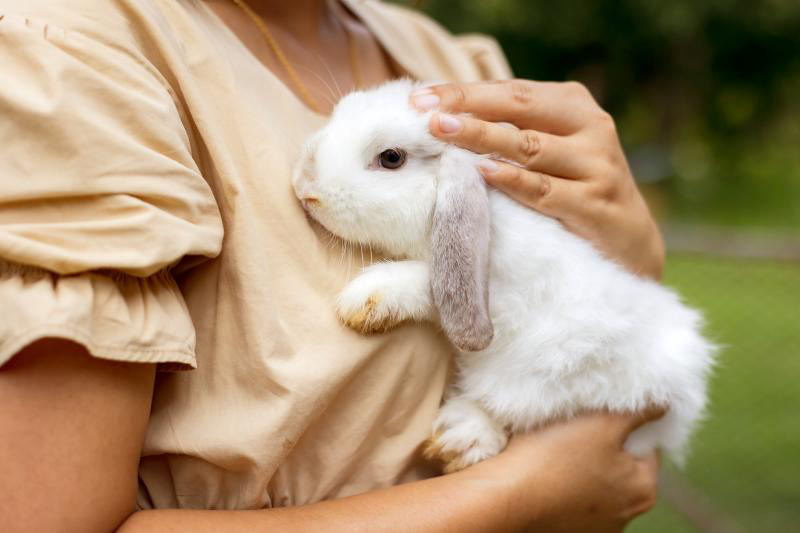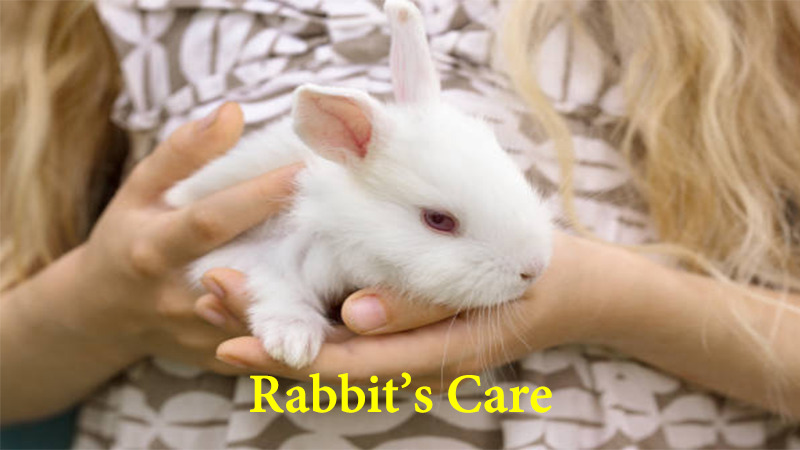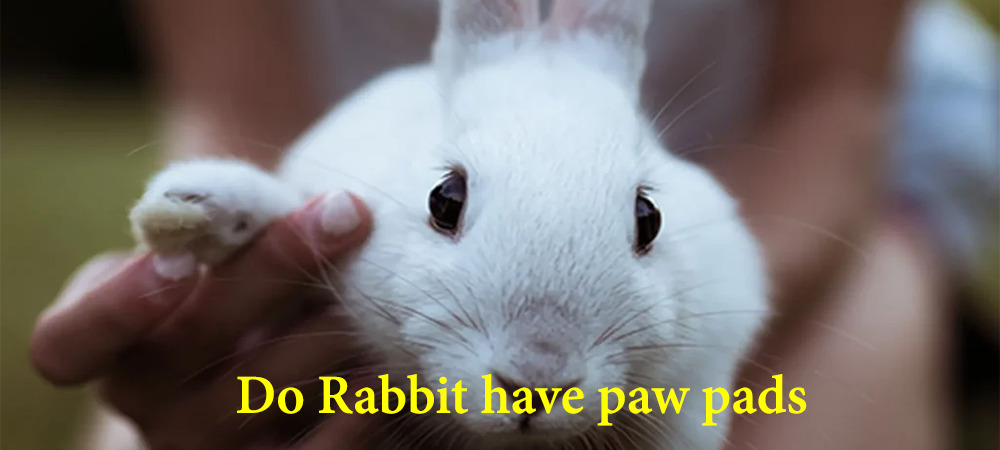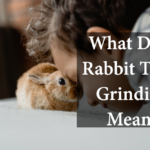Our rabbit’s paws gently tap on our faces to wake us. Their paws touch the ground silently as rabbits stalk food. Fictional rabbits are generally depicted in this way because it is assumed that as a rabbit is cute and furry, it might have padded paws. And while we often do not notice these portrayals of bunnies, our wrong assumptions can prove harmful to real-life rabbits as well as us.
Rabbits are such beautiful creatures, very different from all other pets. They have a small body size, a unique physiology, a delicate digestive system, a high reproductive rate, are furry, and are friendly. But do they have paw pads?
It might be wise to convey what’s the facts as we think of paw pads before explaining anything else. We will discuss Do rabbits have paw pads.
Rabbits do not have padded paws. Let’s discuss this in detail.
Rabbits Do Not Have Paw Pads
Rabbits don’t have padded paws. In fact, the lack of paw pads has given rabbits evolutionary advantages as natural prey animals and kept them safe.
Paw pads are composed of rough, fibrous cells and fatty tissues with blood and some nerve connections. Dogs and cats have padded paws as a way to cushion their steps, protect their paws from hot and cold weather, and brake quickly while running.
On the other hand, rabbits don’t have such padded paws. Rabbits have furry feet, not paw pads. The reason is that they tend to have a different evolutionary history than other domesticated creatures.
Their life is incomplete without beautiful and gentle feet. You might have observed that they are white and feathery if there was a time when you looked at the paws of a hare. They can also be of various colors in accordance with the rabbit’s coat pattern.

Studies have shown that rabbits have paw preferences when it comes to running swiftly, hopping down steps, stepping over an object, or napping.
Rabbits use their paws for grooming and for eating or drinking purposes. A classic image is of a cute bunny licking her paws and then using them to wash her head or body. You may also have seen your rabbit holding their paw behind their back, dipping it into its food bowl, and then licking water through it.
Rabbits are terrestrial animals that do not have paw pads. Having no padded paws is one of the reasons for our curiosity about rabbits, which amazes us!
What are paw pads?
A paw pad is the soft shoe-like part of an animal’s feet; generally, a quadruped has claws. These pads act like a cushion for the animal’s load-bearing limbs. The epithelium covers a layer of fatty tissues under an animal’s skin.
Paw pads consist of:
- Digital paws below the toes
- A metacarpal pad at the center of an animal’s paw
- A carpal pad is seen at the place where the wrist is supposed to be.
Many animals have paw pads on all four legs, while some have them only on their front legs. All of these depend mainly on their genetic features and their adaptation to the environment.
Why Rabbits Don’t Have Paw Pads?
Because of their distinct history from other domestic animals, rabbits do not possess paw pads. Several factors contribute to the lack of these structures in rabbits:
Being small prey, they need to run quickly to escape predators.
Dogs or cats are toe runners but bunnies can run on the balls of their feet as well as their tiptoes which is an added advantage when they are trying to flee hence having pads would only hinder them more while running.
The natural surroundings of rabbits don’t require paw pads.
Rabbits tend to live on grassy lands, sandy deserts, or soft forest floors; these are conducive to their dietary needs. On the contrary, rocky paths are not suitable for them to live on. Therefore, there is no need for thick and padded paws.
In these preferred environments with softer grounds, rabbits do not require cushiony paws. Furry and normal-looking paws are perfectly fine for them.
Rabbits do have paw protective measures on their feet.
Instead of paw pads, rabbit’s feet are covered with fur. It fills the spaces between their toes and acts as insulation when moving fast or when crossing a hot or cold surface.
According to these facts, bunny rabbits don’t possess the depicted paw padswhich are shown in the cartoon which are wrong anyway because they never had any such thing in reality.
What kind of feet do rabbits have?
Rabbits have unique feet. They don’t have paw pads like most mammals. What they have instead is a plantigrade foot, one that walks on the whole sole of its foot. Each one of these feet has five digits; four toes and a small dewclaw on the hindlimb.
The feet of rabbits are covered in fur although there are no protective or insulating qualities provided by the absence of paw pads. Their feet are well-suited for quickness and precision which allows them to move in different terrains with amazing agility.
Their nails grow sharply, which is sometimes suitable for them to survive in the wild. However, domesticated rabbits get their nails trimmed in the house.
Rabbits do not have the padding or stickiness of typical foot pads, but they compensate for this with natural quickness and sharp senses that allow them to move swiftly and effectively within their environment – which also helps them elude predators while looking for food.
The problem of sore hocks in rabbits
Having no pads on rabbits’ paws can pose significant problems for them. Sore hocks are one of the most common problems in pet rabbits, and rabbit owners mostly ignore them because they are not aware of the lack of paw pads and tend to confuse them with their structure.
Sore Hocks
It’s an inflammatory condition that can adversely affect a bunny’s paws due to friction on hard and rough surfaces. When the bleeding starts from the lesions. There are chances of infections at this stage due to the presence of bacteria in the soil, urine, or droppings.
This situation is also said to be ulcerative photodermatitis. It can prove to be lethal if left untreated.
Symptoms of Sore Hocks
Rabbits suffering from sore hocks are usually inactive and avoid putting weight on the affected foot. This type of inability affects and diminishes the well-being of bunnies. The rabbit tends to move more slowly than usual. You must check on their feet regularly.
Inflamed patches
If the symptoms are ignored at the initial stage, bald patches will become inflamed and start damaging the whole skin. Inflammation often means that your rabbit will catch the sore hocks early. At this stage, you need to consult the vet to properly cure the foot.
There are both physical and behavioral symptoms of sore hocks. It generally occurs in three stages. If the first stage grows worse when left untreated, it will create major issues later on. So, bring out the solution at the first stage itself.
How you can prevent your bunny from having sore hocks?
Here are the measures you can adopt to prevent the progression of sore hocks in rabbits:
Fine flooring
The most important thing is to provide appropriate flooring for your rabbits. The floor should be fine, a little soft and not slippery enough that their paws do not lacerate at all. For this purpose, you can use memory foam pads or a fleece.
Spacious ground
Provide your bunnies with ample space to run and play. It will definitely protect your bunnies from sore hocks.
Keep their litter box or cage clean
Unhygienic cages or litter boxes increase the proliferation of bacteria, causing infections. To avoid humidity and dust from the floor, clean their cages regularly. The soft straw bed fits perfectly with the needs of the rabbit. It should be changed at least 2 to 3 times a week.
Good food
Try to increase the physical activities of rabbits by engaging them with toys and other food items. Increased physical activity will reduce obesity in rabbits and thus sore hocks (caused by excess body weight).

Give them ideal diets by considering the suggestions of experienced vets.
Keep a check on the rabbit’s feet regularly and with timely check-ups. Sore hocks that remain unnoticed for a longer period of time can be a cause of serious concern.
How to care for a rabbit’s paws?
Here are some tips for taking care of a rabbit’s paw:
👉 Inspecting the paws
👉 Cleaning regularly
👉 Nail trimming
👉 Remedies for a dry rabbit’s paw
👉 Additional considerations
FAQ
Do rabbits have paw pads like dogs and cats?
No, they do not. In fact, the rabbit foot is unique among many other animals in that it does not possess distinct padding.
What are the features of a rabbit’s foot if they don’t have paw pads?
The soles of their feet are flat; this means they walk plantigrade. They also have five digits per limb – four toes each plus a small hind dewclaw.
How do rabbits walk without paw pads?
Their fur covers their feet which allows them to save energy while leaping great distances. In addition, their light legs make it possible for them to change direction rapidly when they are in need of doing so.
How do rabbits’ feet contribute to their overall agility and survival in the wild?
In the wild, rabbits depend on their ability to be agile and survive. They are not only able to escape from predators easily but also find food and move around different kinds of places without much struggle thanks to their feet. The design of these feet is tailored for the environment they live in as well as their way of life.
Are there any similarities between rabbits’ feet and other animals’ paw pads?
It is correct because even if they don’t have what is known as pads in common parlance; the sole of a rabbit’s foot produces friction and traction required for walking on any kind of ground just like any other animal’s paw would.
Final thoughts
Your rabbit’s paws are as important to them as your feet and hands are to you! It is imperative for rabbit owners to assist in caring and keeping their bunnies’ feet healthy. These rabbit paw health tips should help keep all your pet’s foot pads in your furry family fresh and safe.
With everything involved in caring for your small furry friends, it’s quite easy to overlook proper rabbit paw care. Making a daily habit of checking and cleaning them will make it easier to keep them in good condition as well as avoid foot-related threats.


